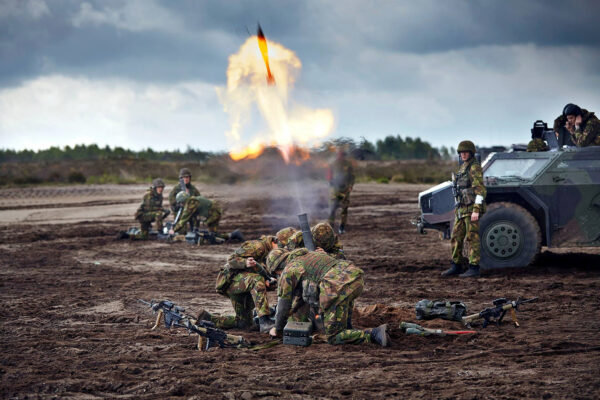
The Dutch government is raising defense spending to nearly €20 billion in order to meet NATO’s 2-percent target.
The ruling four-party coalition (which includes my own liberal party) increased military spending from €12 to €14 billion prior to Russia’s invasion of Ukraine. It is adding another €15 billion over the next three years, which should be enough to reach 2 percent of GDP by the time of the next election in 2025.
Per capita, this would make the Netherlands the largest military spender in the EU. In Europe, only the British spend more.
It is a turnaround for a country that only ten years ago sold almost all its artillery, frigates and tanks.
How to spend it
When the coalition announced it would raise defense spending in March, I argued in Wynia’s Week that it should prioritize restocking supplies and raising soldiers’ wages before buying expensive new weapons.
I’m happy to report they did. Half the extra money is invested in the existing armed forces. The other half will be used to buy new air defenses, missiles and additional F-35 jets.
The Netherlands is also sending weapons, including antitank missiles, mobile radar systems and self-propelled howitzers, to Ukraine, but those expenses are counted separately. Dutch readers may be interested in another story I wrote for Wynia’s Week on how the Netherlands’ military aid to Ukraine compares to that of other NATO allies.
Higher salaries
Start with personnel. The Dutch military employs some 41,000 soldiers and 27,000 civilians. There are almost 9,000 job openings.
In 1990, the country had 57,000 professional soldiers and 46,000 conscripts. The draft was abolished in 1997.
The average military salary is €3,800 per month, which is higher than the national median wage. But young soldiers are underpaid. They make less than minimum wage, which at least partly explains the high number of vacancies.
All wages will rise by 8.5 percent with a bonus for the lowest-paid. Their wages should go up by as much as 20 percent.
In addition, the army will stock up on ammunitions, fuel and gear.
Not enough weapons
The Dutch armed forces lost the bulk of their heavy equipment in two rounds of cuts, one after the Cold War and another during the Great Recession.
The Netherlands used to have more than 900 tanks. It sold all but eighteen, and they are part of a joint Dutch-German tank battalion.
At its peak, the Netherlands operated 213 F-16 fighter jets. 68 remain, and they are being phased out in favor of the F-35. Because the new jet is more expensive, the Netherlands is buyer fewer.
Three out of four artillery brigades have been cut. The Dutch Navy sold eight of its sixteen frigates.
The lack of matériel is so dire that the military admits it can no longer defend Dutch territory, including in the Caribbean. More out of necessity than by choice, it has specialized in peacekeeping, but after taxing operations in the former Yugoslavia and Afghanistan it can barely manage those anymore either. The Dutch Court of Auditors reported in 2018 that soldiers deployed to Mali had to “improvise” to make up for lack of equipment.
Jets, missiles and submarines
The Air Force is buying six more F-35s from Lockheed Martin, bringing its total to 52, and four additional Reaper drones from General Atomics, also an American company, doubling the Dutch total.
The Ministry of Defense says it will invest in land- and sea-based air and missile defenses.
A battalion of the Air Assault Brigade will be converted into a support unit for special operations forces with their own helicopters.
The main item left on the government’s to-do list is picking a replacement for the Netherlands’ aging Walrus-class submarines. The intention is to replace all four. Contenders are the Netherlands’ own Damen Group, which has partnered with Saab of Sweden; Naval Group of France; and Germany’s ThyssenKrupp.
